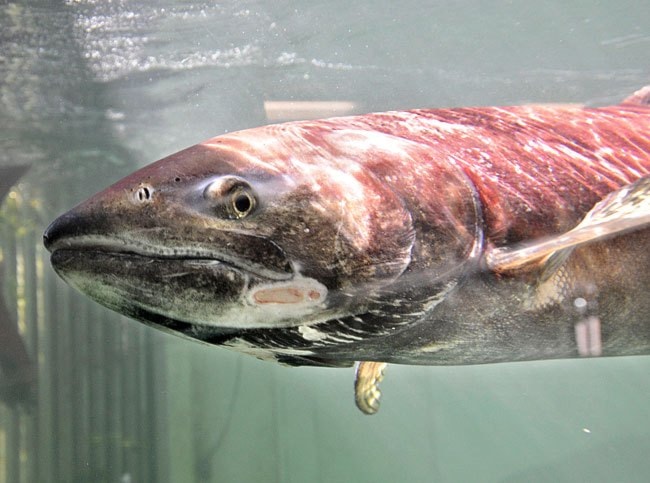The Yukon River chinook salmon run is doing better than expected.
Earlier this year officials were bracing for another dismal run, one that could be the worse on record.
But now that most of the salmon that will enter the mouth of the Yukon River this year are already on their way, it’s clear that the dire predictions have not materialized.
Preseason estimates suggested that the total run size would be between about 60,000 and 120,000 fish. Approximately half of those would be headed for Canadian portions of the Yukon River.
Officials were planning for the actual run to fall on the low end of that estimate, since in recent years fewer fish than expected have returned.
But now it looks like run could fall in the upper end of the spectrum. As of Tuesday more than 100,000 chinook had begun their journey up the Yukon River. Another 20,000 or so are expected to make their way to the mouth in the coming days.
“A run of this size is still unfortunately lower than average,” said Stephanie Schmidt, a biologist with Alaska’s Department of Fish and Game.
On the American side of the border, all targeted chinook fishing has been shut down this year in order to protect the run and get as many fish as possible into Canada.
Under treaty the Americans are required to allow 42,500 chinook to pass safely into Canadian waters. That goal has not been met in five of the last seven years.
The better than expected run size, combined with severe fishing restrictions, could mean that goal is met this year. Chinook are expected to start passing the Eagle Sonar station just below the border later this week.
Yukon First Nations will also not be fishing until enough fish have made it over the border to ensure a healthy spawning population.
The Yukon Salmon Sub-Committee has recommended a full ban on chinook fishing to the federal fisheries minister until we see what the numbers are like coming in.
“The YSSC doesn’t take this responsibility lightly and understands the sacrifices and hardship that comes from not being able to harvest Yukon River chinook salmon,” said Pauline Frost, the committee’s chair, in a news release.
“We have heard from Yukon First Nations how difficult this will be for the elders and the youth that won’t have chinook salmon hanging in their fish camps. We know that a number of Yukon First Nations have already been conserving and voluntarily restricting their fisheries for some time now. We hope this closure will in the long term ultimately result in a return of chinook salmon to the levels that we have seen in the past.”
Every Tuesday during the chinook run representatives from communities all along the Yukon River meet for a teleconference call to share information about the river and the fish.
On this week’s call many Alaskan communities expressed frustration at strict fishing restrictions designed to allow a harvest of summer chum salmon while allowing the chinook to pass.
“A lot of people are wondering when they are going to lift the restrictions on the river,” said one representative of a village on the lower portion of the river.
The rules ban fishing with gillnets, which ensnare salmon by the gills and can’t discriminate by species, in favour of dipnets and other equipment that allow chinook to be gently caught and released.
Some Alaskans mentioned that people in their communities don’t have the allowed equipment and are giving up on the summer chum run altogether.
“It’s a sad situation for everybody this year,” said a representative from Nenana, Alaska. “Most are giving up for the fall chum harvest.”
Contact Jacqueline Ronson at
jronson@yukon-news.com
